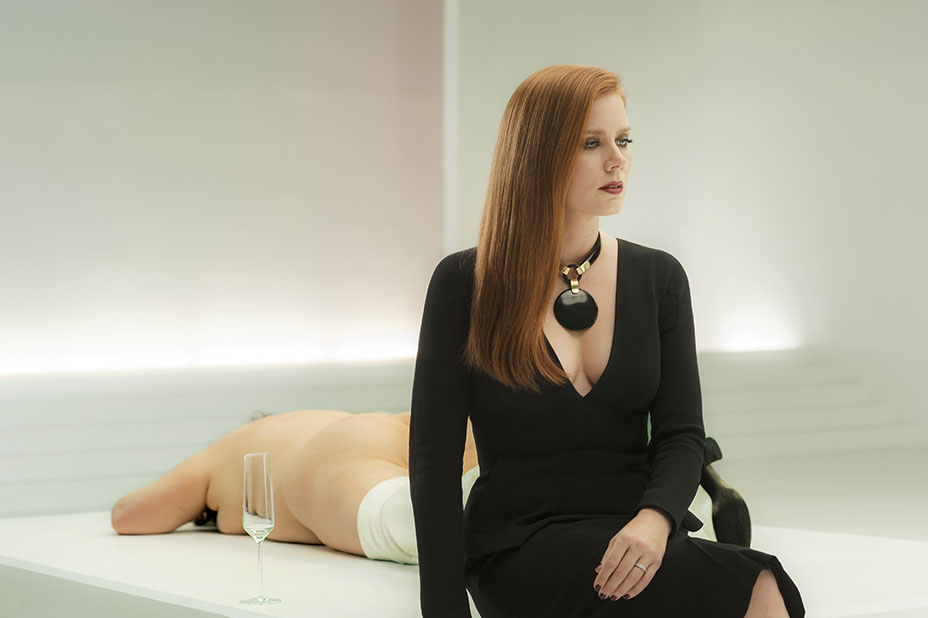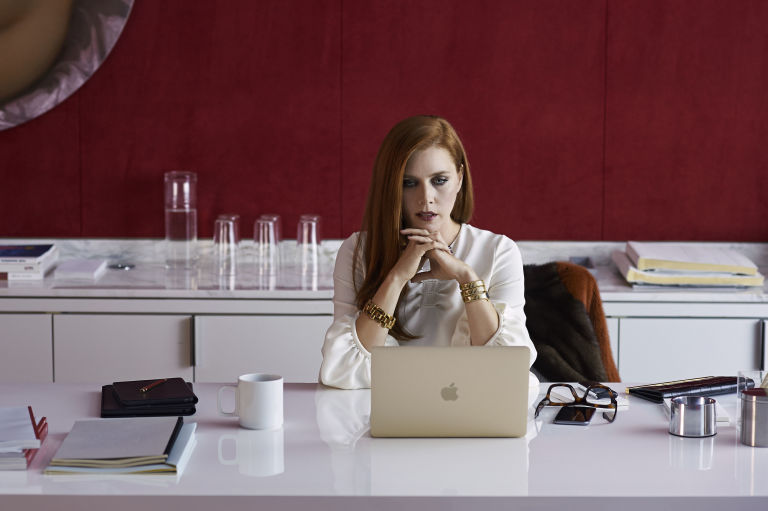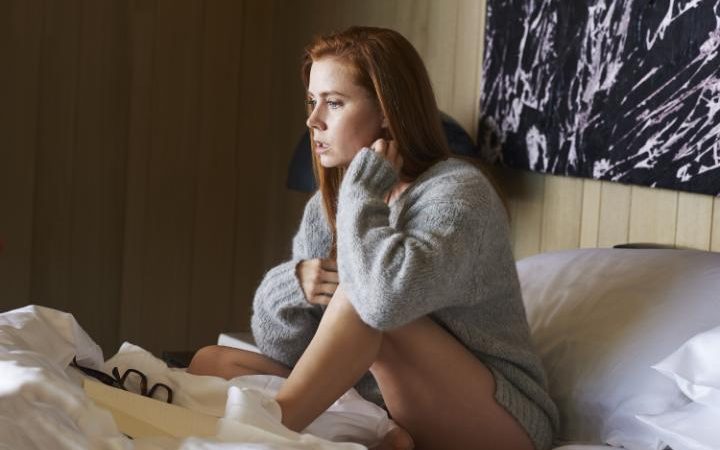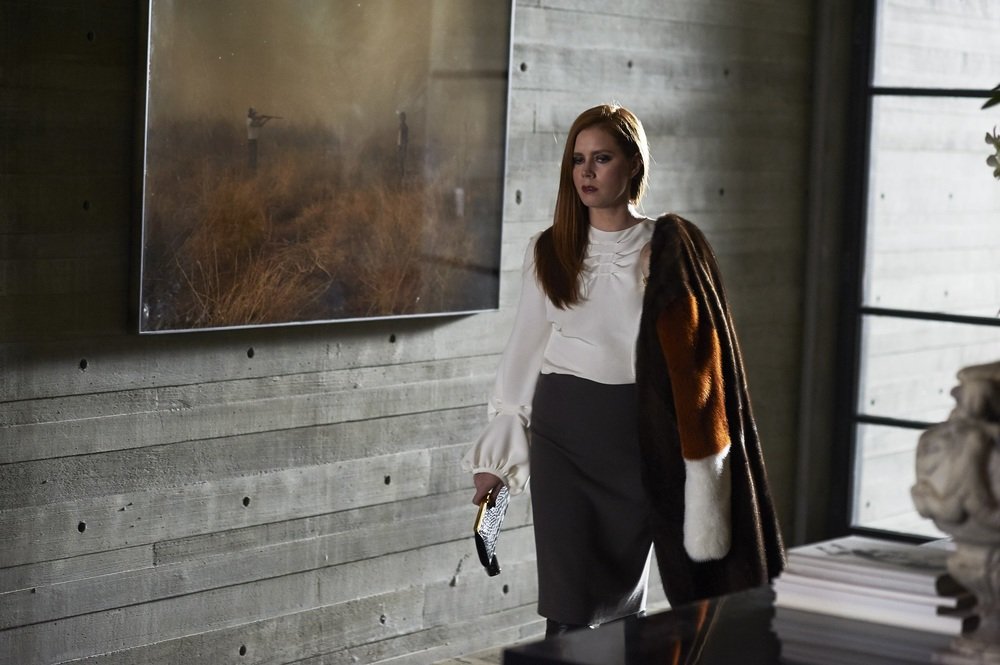A friend of mine once told me that she’s most impeccably dressed when she is going through the most difficult times. I have never forgotten her words, which kept ringing through my head as I was watching Nocturnal Animals. Amy Adams’ character, Susan Morrow, is glamorously dressed, severely buttoned up and incredibly precise throughout the entire film. But it’s not the kind of glamour that you end up aspiring to. At the very most, it’s the kind of glamour you admire from afar as beautiful presentation. It’s almost too perfect. And we all know that perfect does not exist. It makes you feel uneasy, builds up tension, acting like a warning for something very bad that’s about to happen.


Susan is an LA art gallery owner, living the high life. But despite her handsome husband, her immaculately luxurious mansion overlooking the city and her fabulous wardrobe, her whole life is far from idyllic. It soon becomes clear that her clothes are a glamourous armour, a façade, a front to mask the turbulence beneath the surface. The film is a cautionary tale about empty wealth and beauty, and about coming to terms with the choices one makes in life. And Susan’s life is thrown into an even deeper emotional turmoil after she receives the novel written by her ex-husband, Edward (Jake Gyllenhaal). As she reads the manuscript over a weekend, the contemporary timeline and the fictional story in the book (with Gyllenhaal also playing its main character, Tony Hastings) begin to overlap, unlocking intimate flashes of Susan’s past and her relationship with her ex-husband.
The direction, cinematography, production design and the costumes all come into play to artfully interweave the three different story lines and settings. One might have expected an acute aesthetic sense from Tom Ford’s second foray into film – as a fashion designer, Ford has created a singular design aesthetic, a highly stylised and perfectly controlled image and unattainable perfect taste, and as a director, he has the skill to use beautiful visuals to tell a story, even at its darkest.


Susan’s sleekly tailored – even architectural – clothes, killer heels and sumptuous statement jewellery “really help tell the story of her precision, her perfection and her attempt to be presentational at all times, even when her life is falling apart,” costume designer Arianne Phillips said in an interview for The Telegraph. Even when she is alone, at night, at home, reading the novel Edward has sent her, she is wearing steely-grey knitwear.
In case you were wondering, Amy Adams’ costumes were not designed by Tom Ford. He did not want to displace the viewer from within the plot by placing his own designs in the film. It’s the right approach and I didn’t expect anything less from Ford, who turned once again to costume designer Arianne Phillips, the one also responsible for the visually pleasing and highly suggestive wardrobes in Ford’s directorial debut, A Single Man.

There are a lot of neutrals in Susan’s wardrobe, but for the film’s climax, when she attends an important dinner, she is dressed in a green keyhole neckline dress. The dress was designed by Phillips in collaboration with Ford’s design consultant David Bamber.
Green is rarely picked for film costumes. “I am not a fan of the red dress that you see in movies”, Phillips told The Telegraph. Red, however, recurs throughout the film, in different forms, from the blood from Susan’s paper cut when she opens the manuscript, to Tony’s checked shirt and the walls in her office. “We saved a strong colour for the end – this very strong green dress. It’s a public scene and we really wanted a colour that would stand out cinematically. That particular green is flattering to Amy Adams. I love a redhead in green and that was a yellowy chartreuse. It felt right, sometimes there’s an intuitive sensibility to filmmaking.”
The sequence reminded me of Hitchcock’s Vertigo, in particular the restaurant scene when Madeleine’s green suit stands out against the red wallpapered room, and the viewer is immediately drawn to the character. In Nocturnal Animals, Susan’s green dress, also set against the red walls of the opulent restaurant, seems to serve to awaken the right sense of discomfort and apprehension in the viewer. It can suggest both attraction and the potential for harm. It controls the screen in a way any other colour would have not. Green becomes the symbol of the night – Susan’s ex-husband used to call her a “nocturnal animal” – that eventually affected the lives of all the main characters in the three worlds that make up the film, so skillfully intertwined and all permeated with Susan’s obsession with rampant materialism and haunted by the decisions she once made.
photos: movie stills | Merrick Morton/Focus Features
This content is published courtesy of classiq.me
